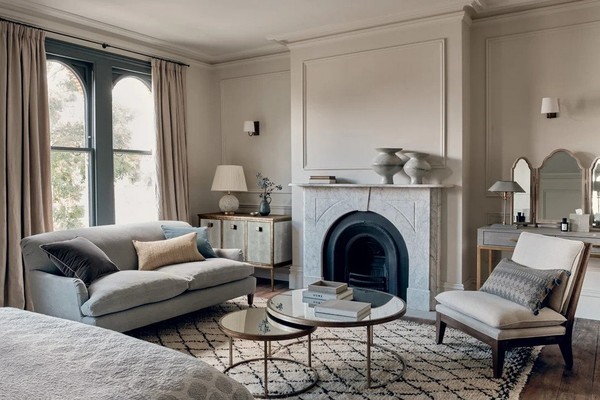
Whether trying to spruce up an old living room or overhaul your entire house, furniture shopping can be daunting. With the variety of styles, sizes, prices, and materials available, it’s easy to get overwhelmed – not even considering that most shoppers’ budgets don’t allow them to buy whatever they want! But with research and attention to detail, finding the right pieces for your home can be simple. In this blog post, we’ll look at seven things you should keep in mind during furniture shopping to ensure your selections will last a lifetime, bring style and comfort into your home and fit within your budget.
-
Size
Furniture shopping can be a daunting process, but it pays to pay attention to details. Size is paramount in furniture: you don’t want to buy something only to find that it is too big or too small for the space. Even if you are in love with the design, if it fits into the room perfectly, it will look right and serve its purpose as intended. Measure twice and shop thrice take measurements of the room and note them down before going out furniture shopping so that you know what size pieces would fit comfortably. Consider any additional space needed to walk around or open doors. Don’t skip doing your research; use the measurements from your home and compare those with measurements found online this will help immensely when selecting the perfect size piece for the designated area!
-
Assembly

When looking for the perfect furniture piece, there are countless things to consider – from size to style to comfort. An often-overlooked factor is an assembly; is it something you can do by yourself, or will you need help putting it together? This is crucial for many reasons, such as if you live in a walk-up apartment or have limited room for maneuverability when transporting the piece from the store. You can also consider Floyd furniture delivery times.
Additionally, consider the amount of time that assembly may take; some pieces take a few short minutes, whereas others require hours and might involve tricky maneuvers and multiple extra objects. Consider your skill level when making these decisions; if you need more confidence about doing a particular project, reach out to someone who can help you! Shopping around is essential – both in terms of cost and convenience – and a little extra effort upfront can save you time and energy when putting your purchase together
-
Functionality

When shopping for furniture, it’s important to consider functionality. Ask yourself if it has the potential to be used in multiple ways or if it is too specific to one activity. For example, if you want a shelving unit for a bedroom but think you may move in the future and want that shelving system for other areas of your home, look for one with multi-functionality—maybe one that could also work as a room divider or a corner bench. Additionally, consider any other potential future uses.
If the furnishing has adjustable arms or legs and can recline, this could be useful when you need an extra bed for visitors. It’s helpful to save your options open by choosing pieces with multi-functional features which are valuable not only today but down the road as your lifestyle changes. Ultimately finding multi-functional pieces can pay off in comfort and utility and save time by reducing the need to purchase additional items later.
-
Material

When furniture shopping, it is essential to focus on the material that the furniture is made of and how durable it is. The material used for each piece of furniture can affect the look and feel and its longevity. Pay particular attention to details like the type of wood, fabrics, synthetic fabrications or foams used for cushions, strengths of steel frames, or construction techniques used. You’ll also want to ensure that materials are properly sealed against water damage like wood, or have proper moisture protection so that they won’t wear down quickly with use.
Additionally, consider testing out pieces in the store to ensure its sturdy and supportive enough, dry brushing upholstered items to check for fading or unexpected smells. Research furniture warranties available and scrutinize tags before making your decision – this will guarantee that you get quality pieces made from durable materials that can withstand everyday use over many years.
-
Aesthetics

Furniture shopping is a necessary decision-making process. One of the main things to consider when selecting furniture is its aesthetics; after all, it has to fit in with the rest of your home’s decor and create a balanced, aesthetically pleasing space. While it can be undeniably tempting to opt for bold pieces that stand out, they could end up clashing with your existing furniture or throwing off the balance of your room.
If you have opted for bold colors and decor styles, look for furniture that complements them without detracting from them instead of pieces that enhance their vibrancy. If you’ve gone for neutral tones, choose similarly toned furniture but look for subtle design details that add character and depth. Ultimately, consider the importance of aesthetics when shopping for furniture; it could make all the difference in creating a comfortable and attractive home you’ll love spending time in.
-
Price
Furniture shopping can be both an exciting and daunting endeavor. Before going to the store or even starting your online search, one of the most important things to consider is price. Furniture prices vary widely, and deciding if the amount you’re willing to pay is worth the quality and features offered by a particular piece is essential. Quality is often reflected in the materials used, such as solid wood versus laminate, and the construction methods used by manufacturers.
There are also more intangible elements of furniture that can add value, like design style or a specific comfort level. It’s wise to compare prices between different stores and research customer reviews about their experience with that furniture piece. Doing some research before shopping can help you find what you’re looking for – at a price that fits your budget!
Conclusion:
With these six factors in mind, you’ll find the best home furniture. Be patient and take your time to test out each piece before you make a final decision – after all, you want to love your new furniture for years to come. Who knows, maybe with careful consideration, you’ll find a piece that becomes an instant classic and is handed down through generations.






